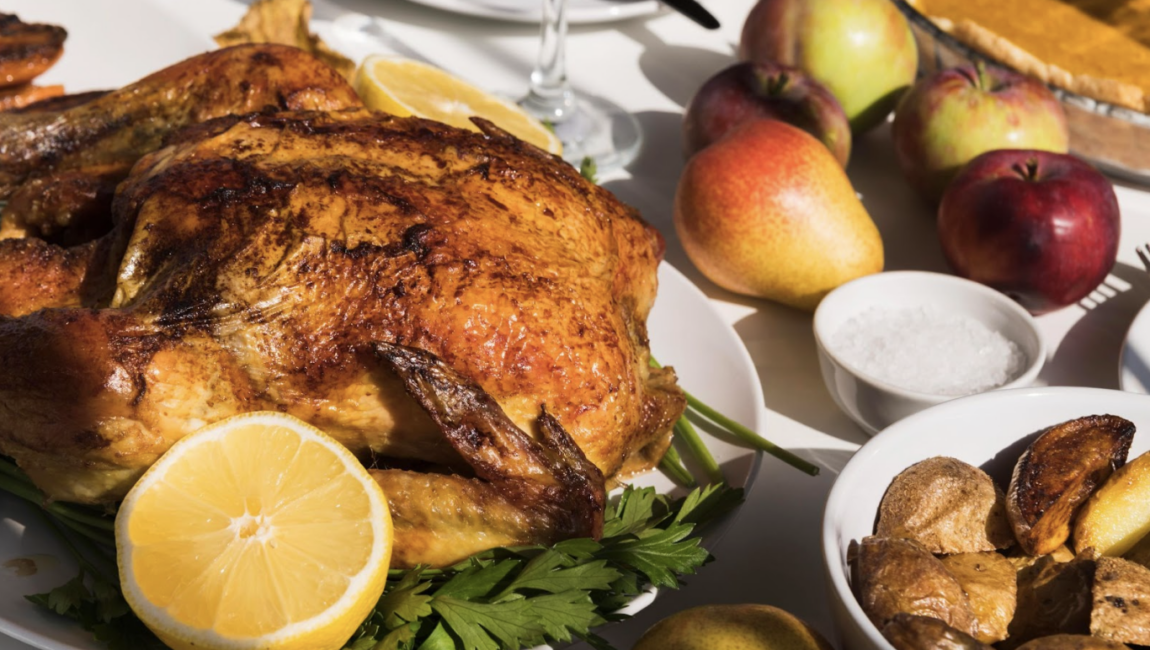
Wild Tom for Thanksgiving?
Yep, it’s possible.
So you finally bagged that big Wild Tom this fall, and now you may be wondering whether or not to bring him to your Thanksgiving feast. Wild Tom isn’t known for his tenderness, and he has a way of drying out the conversation. But with some special attention, Wild Tom may turn out to be the life of your party.
Turkey has been part of America’s Thanksgiving traditions for a couple hundred years. However, Smithsonian historians don’t believe it was actually part of the first Thanksgiving in 1621. Turkey at Thanksgiving gained its popularity for practical reasons more than anything else. It was much larger than a chicken, so turkey fed a larger group and it was convenient, as they were a widespread game living on most properties.
The conversion from wild to domesticated turkeys on our tables began in the late 1800s. Because turkeys were not native to California, and migrants to the sunshine state still hankered for this feathered friend, turkeys were imported and poultry ranches were underway. As they say, the rest is history… and genetics and logistics.
When placed side-by-side, there is a visible difference between domesticated and wild turkeys. Domesticated turkeys usually have much larger breasts and are meatier overall. Wild birds have a darker colored meat. But the biggest difference, as most meat connoisseurs will tell you, is in taste and texture. The key contrast in taste is because wild turkeys forage on food found in their natural habitats such as acorns, grains, young green shoots and bugs. Their meat is also tougher, because they are on the run trying to stay a step ahead of their predators.
But don’t let these differences discourage you from sharing your award winning hunt! With a little finesse, you may create a new tradition to share at your holiday table. Here are some helpful tips for cooking wild turkey.
1. Don’t overcook it!
The main mistake cooking wild turkey people make is overcooking it (think Clark Griswold in National Lampoon’s Christmas Vacation). Most directions for domesticated turkey tell you to cook the bird to a minimum of 160 degrees and a maximum of 175 degrees, but for a wild turkey, the maximum should be 160 degrees. This is because wild turkey is a leaner, more muscular meat than domesticated turkey. Overcooking the meat will leave it dry and stringy.
2. Consider a slow cooker.
“Low and slow” is one of the best ways to cook a wild turkey, or at least the dark meat. Place the legs and back into a slow cooker with some chicken stock, and maybe some apple juice, to help break down the connective tissues. There are plenty of delicious recipes to try that will help make your turkey savory and delicious.
3. Try a flavorful brine.
Brining your wild bird will give it that extra punch of moisture. Brining helps to tenderize the meat by breaking down the connective tissue. It also seasons your bird better than just rubbing salt and spices on it.
4. Don’t stuff him up.
We all know that stuffing cooked inside a turkey brings an amazing flavor. However, stuffing your bird will cause it to dry out, because you have to cook it longer to cook the stuffing.
There are many great recipes out there to try. Find one with all your favorite flavors and go for it! Many blessings and Happy Thanksgiving!
